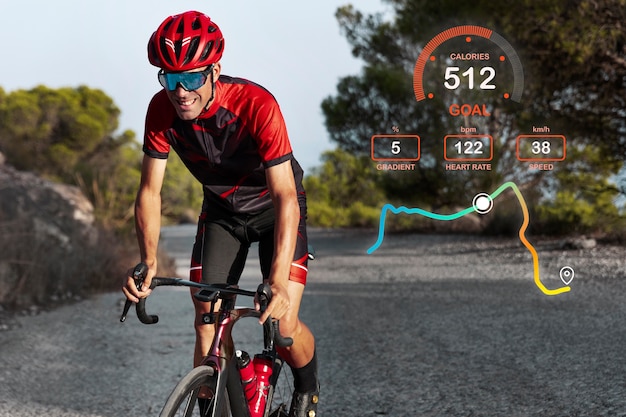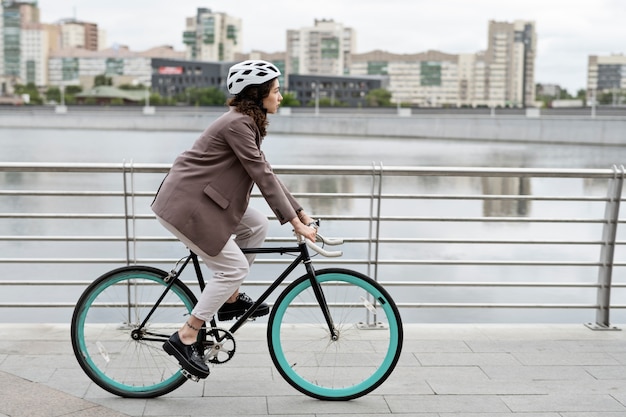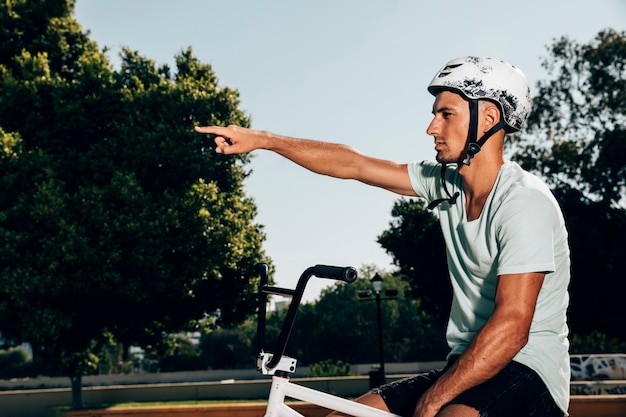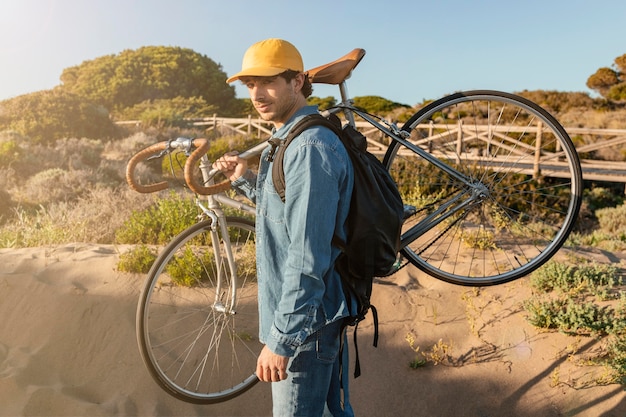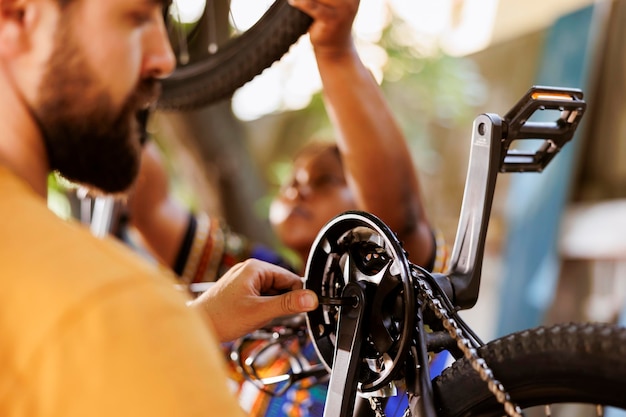Cycling for Beginners: Master Your Posture, Stay Motivated & Track Progress Like a Pro
Cycling is one of the most accessible and rewarding forms of exercise. Whether you're looking to improve fitness, reduce stress, or simply enjoy the outdoors, hopping on a bike can transform your health. But for beginners, one of the most overlooked aspects is posture. Poor posture while cycling can lead to discomfort, fatigue, and even long-term strain. This guide will walk you through how to fix your cycling posture, track your progress, and stay motivated—right from day one.
Why Posture Matters in Cycling
Good posture isn’t just about looking confident—it’s about efficiency, comfort, and injury prevention. When you cycle with proper alignment, you reduce pressure on your joints, improve breathing, and generate more power with less effort.
Common issues for beginners include slouching, overreaching the handlebars, or putting too much weight on the hands. These can lead to numbness, lower back pain, and shoulder tension. The good news? With a few simple adjustments, you can ride longer, faster, and more comfortably.
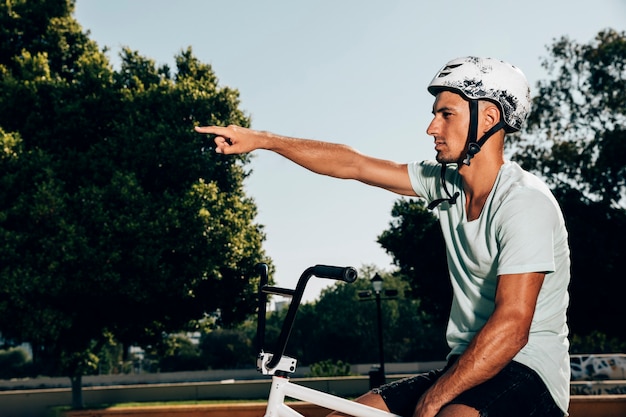
How to Fix Your Cycling Posture: Step-by-Step
- Start with Bike Fit: Ensure your bike is the right size. When seated, your knee should have a slight bend at the bottom of the pedal stroke. Your handlebars should be level with or slightly below your saddle height, depending on comfort.
- Engage Your Core: A strong core stabilizes your upper body. Keep your abdominal muscles gently engaged throughout the ride to support your lower back.
- Relax Your Shoulders: Keep your shoulders down and back, not hunched up near your ears. This reduces neck and shoulder strain.
- Bend Your Elbows: Slight bend in your arms acts as shock absorbers, especially on bumpy terrain. Locked arms increase vibration transfer and fatigue.
- Look Ahead, Not Down: Keep your head up and gaze forward about 20–30 feet ahead. This promotes a neutral spine and better balance.
- Distribute Weight Properly: Your weight should be balanced between the saddle, pedals, and handlebars. Avoid leaning too far forward or putting excessive pressure on your hands.
Track Your Progress: Simple Ways to Measure Improvement
Tracking helps you see progress, stay consistent, and celebrate small wins. As a beginner, focus on sustainable metrics rather than speed or distance alone.
- Ride Frequency: Aim for 2–3 rides per week. Use a calendar or habit tracker app to mark completed rides.
- Duration and Distance: Start with 20–30 minute rides and gradually increase. Use a smartphone app or bike computer to log miles or kilometers.
- Perceived Effort: Rate each ride from 1 to 10. Over time, the same effort should feel easier, indicating improved fitness.
- Posture Check-Ins: Pause during rides to assess your form. Are your shoulders relaxed? Is your back flat? Note improvements weekly.
- Heart Rate (Optional): If you have a fitness tracker, monitor resting and average ride heart rate. A lower heart rate over time signals better cardiovascular efficiency.
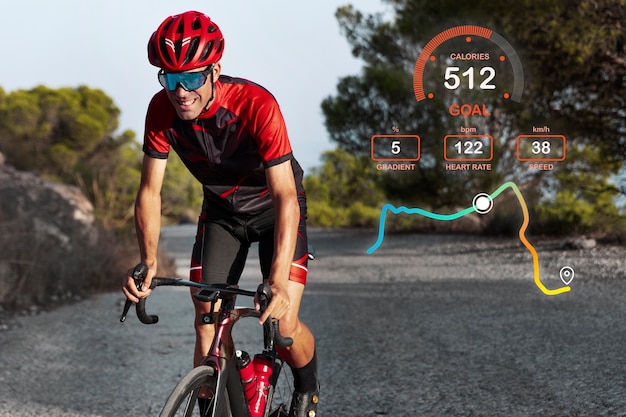
Stay Motivated: Practical Cues for Long-Term Success
Motivation fades, but systems last. Use these cues to keep your momentum going:
- Set Micro-Goals: Instead of “ride 50 miles,” aim for “ride 3 times this week.” Small wins build confidence.
- Find a Cycling Buddy: Accountability increases commitment. Even occasional group rides can boost enjoyment.
- Celebrate Non-Scale Victories: Notice improved sleep, better mood, or climbing hills with less effort. These are real progress.
- Change Your Route: Explore new trails or neighborhoods. Novelty keeps rides exciting.
- Use Affirmations: Repeat simple cues like “Relax and breathe” or “Strong core, light hands” to reinforce good habits.
- Rest Without Guilt: Recovery is part of progress. Take rest days to let your body adapt and prevent burnout.
Bonus Tips for Beginners
- Wear padded cycling shorts to reduce saddle discomfort.
- Stay hydrated—bring water even on short rides.
- Wear a helmet and use lights for visibility and safety.
- Warm up with 5 minutes of easy pedaling and cool down afterward.
- Listen to your body—discomfort is normal, but sharp pain is a warning sign.
Final Thoughts
Cycling is more than just a workout—it’s a journey. By focusing on proper posture, tracking your progress, and using motivation cues, you’ll build a sustainable habit that supports lifelong health. Start small, stay consistent, and enjoy the ride. Every pedal stroke counts.
Remember: every expert cyclist was once a beginner. You’ve got this.





